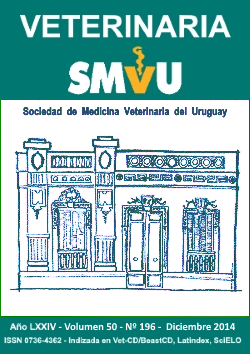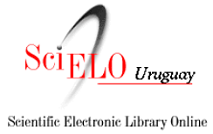First regenerative treatment in Uruguay with mesenchymal stromal cells of a non-union femoral bone defect in a canine
Keywords:
Cellular therapy, Non-union, BM - MSC, CanineAbstract
Non-union is a pathologic bone repair process, where normal conditions of osseous regeneration are altered. The objective of the present study was to assess the alternative treatment of a femoral non-union fracture in a 3 year old male Poodle dog, using bone marrow mesenchymal stromal cells (BM-MSC). After a former conventional surgical treatment of the femoral fracture (open reduction plus external fixation), a non-union was established after two months post-surgery. Thus, a tissue regenerative technique was essayed: percutaneous injection of autologous BM-MSCs at the non-union site. The patient was clinically and radiologically evaluated every 15 days up to 2 months. Observed results seem to demonstrate that the cellular therapy induced bone regeneration starting, two weeks post regenerative treatment. At 8 weeks, clinical and radiological improvement was observed. Cell therapy applied to the femoral non-union enabled bone healing, thus allowing the patient to regain its limb’s function. Further studies are needed to evaluate the application of BM-MSC as an alternative therapy in osseous non-union cases, in order to improve and accelerate the regenerative process in bone lesions.











